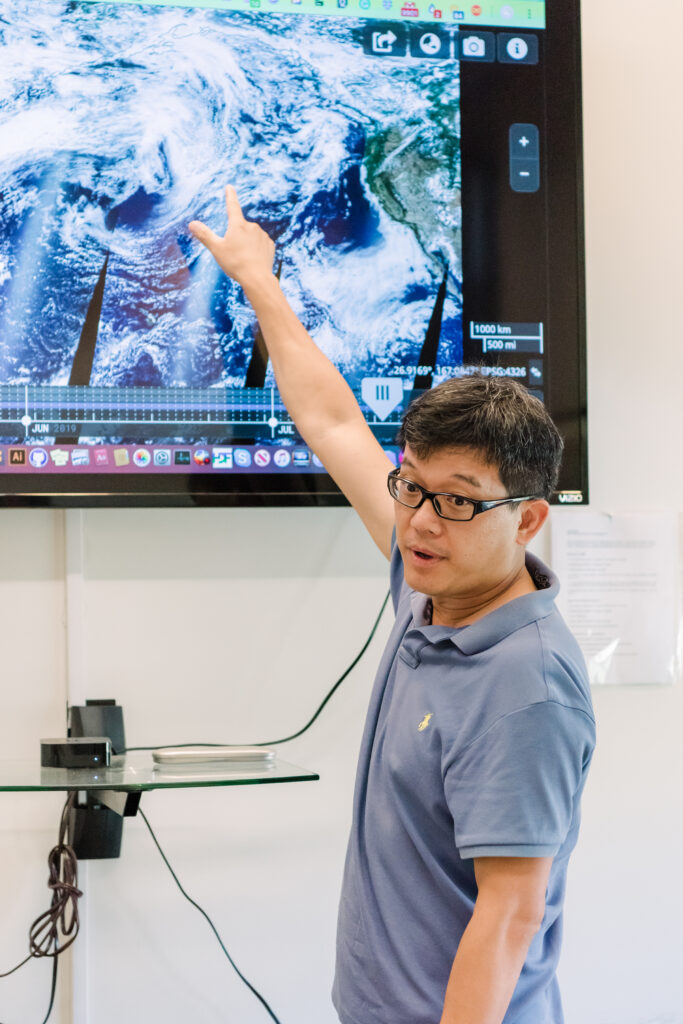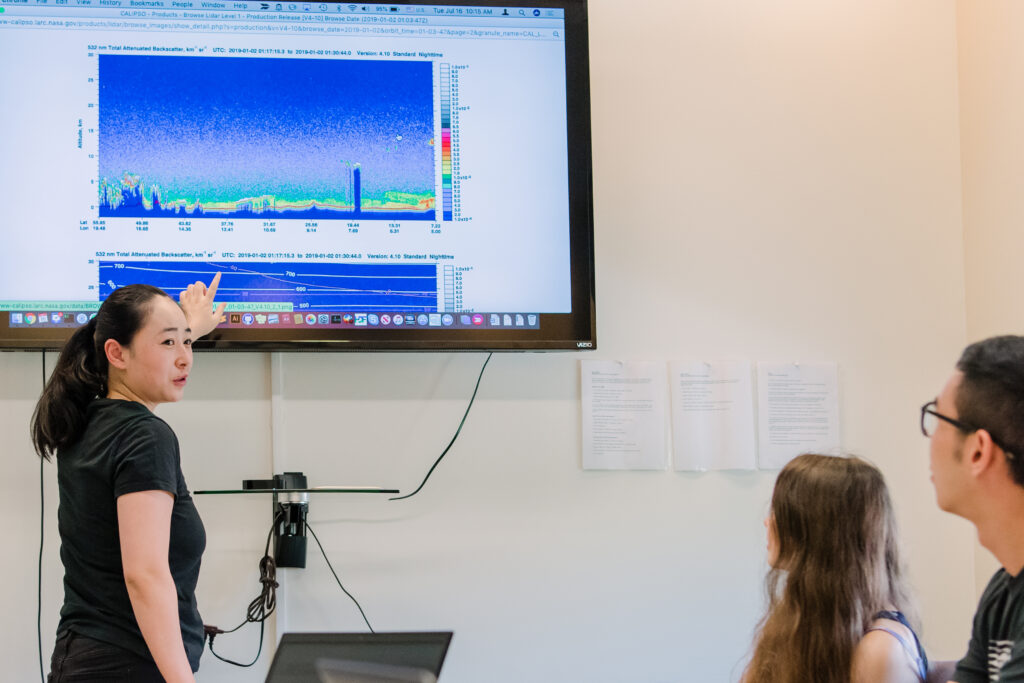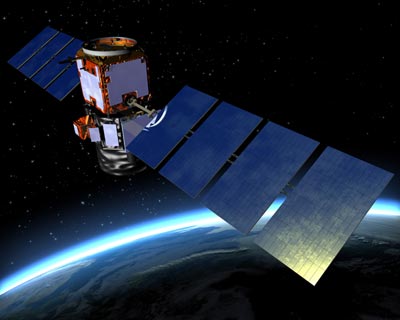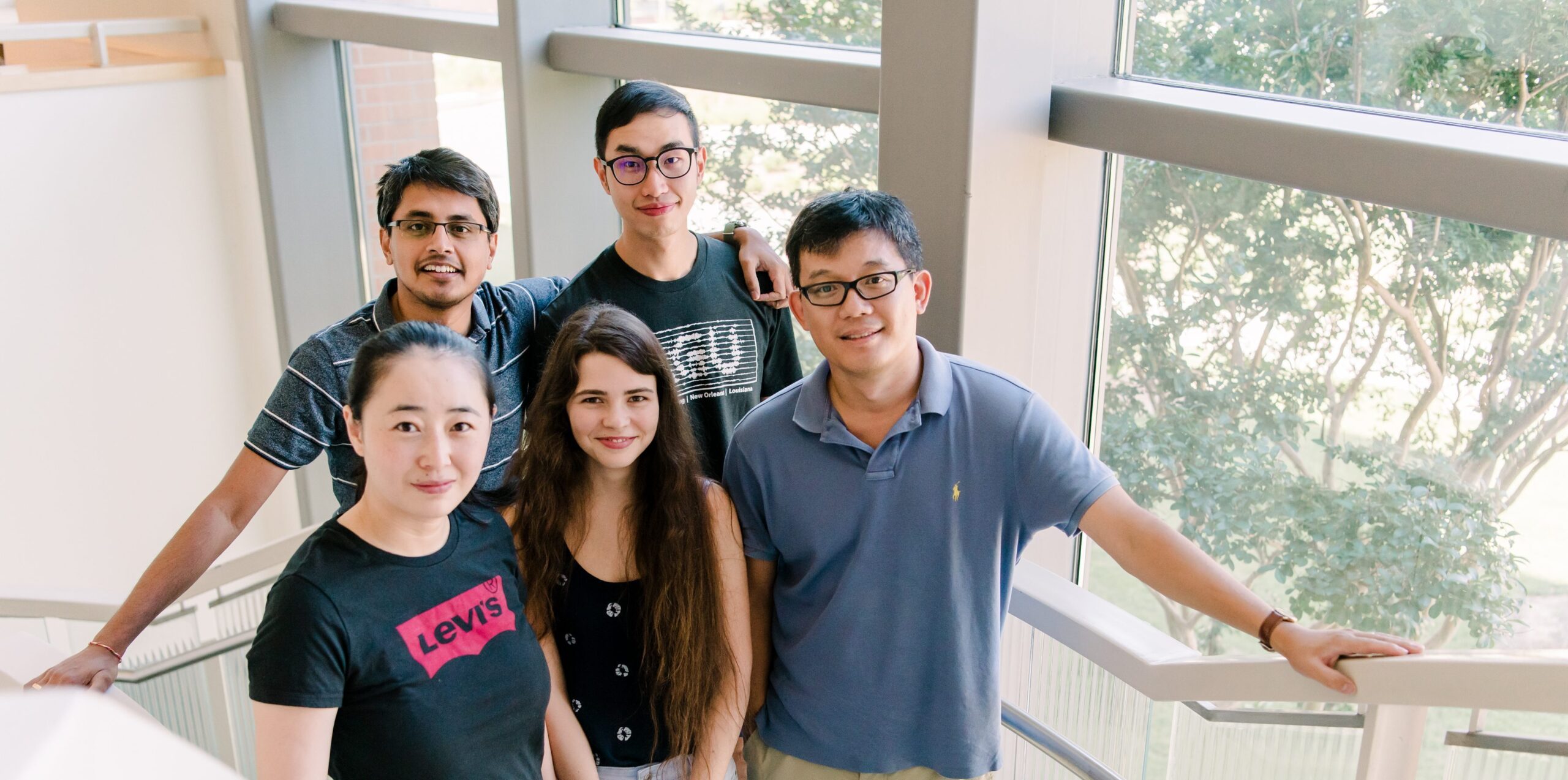Recently, both the Department of Energy (DoE) and NASA awarded Zhibo Zhang, associate professor of physics, significant grants to pursue projects in atmospheric science.
Zhang’s lab has established itself as a powerhouse at UMBC since his arrival in 2011. The lab published groundbreaking findings such as the discovery that dust from the Sahara Desert provides critical nutrients to the Amazon Rainforest in Geophysical Research Letters, and the surprising result that smoke from African wildfires may have a cooling effect on climate by reflecting sunlight back into space in Proceedings of the National Academy of Sciences.
Zhang’s Aerosol, Cloud, Radiation, Observation, and Simulation (ACROS) research group focuses on how small particles in the atmosphere—such as dust, smoke, and other pollutants—interact with clouds and sunlight. His team’s end goal is to better understand how the particles affect global climate and use that information to improve climate models, so we have the best information possible to plan ahead for climate resilience.

Clouds up close
The DoE has awarded Zhang’s group $600,000 over three years to improve how climate models incorporate the effect of clouds. “DoE is very interested in how climate change will influence U.S. and global energy consumption,” Zhang says, and having accurate climate models is critical to that effort. The UMBC project is one of 27 atmospheric research projects the DoE funded with a total of $13 million.
Scientists model the global climate as a grid, with each grid square being 100 to 200 kilometers on a side. “We have all the equations to model the whole system based on these discrete grid boxes and how they interact with each other, but what happens on a more granular level, below that grid size, our models can’t say,” Zhang explains. “That’s 200 km—from here almost to New York—and what happens inside this grid box can be very important.”
“Our whole study is to investigate the sub-grid scale—how clouds change from about 5 to 100 kilometers,” Zhang says. The team plans to analyze data collected by ground-based instruments and research aircraft at the DoE’s site on the Azores islands, about 1500 km west of Portugal, to help “check the model’s assumptions and improve them using observational data.”
The team will investigate, for the first time at high resolution, how the total water content of clouds varies. They’ll also look at the number of individual droplets within grid squares that are measurable from airborne sensors flying near the ground-based instruments. The researchers will also track environmental factors within the grid squares, such as wind, humidity, and the overall density of airborne particles.

Several members of Zhang’s team are involved in the project, including Olivia Norman ‘21, physics. “We’re depending on her to solve some really tough equations,” Zhang says, “and she’s doing very well.”
Externally, Zhang is collaborating with David Mechem, professor of geography and atmospheric science at the University of Kansas, for this project. “We have a very strong team. We complement each other,” Zhang says. “Also, we’ve been thinking about this problem independently—they from the modeling side and us from the observation side—for a long time.”
Dusting off climate models
The NASA-funded project will analyze data collected from instruments on aircraft and NASA’s orbiting CALIPSO and MODIS satellites to better understand whether dust in the atmosphere warms or cools the planet overall. Combining information from the different data sources “is like putting a puzzle together,” Zhang says. “Each one provides one piece of the puzzle, so when you put them together you get the larger picture.”
Considerable research has looked at how dust interacts with light in the visible spectrum—light waves that humans can see. Those findings suggest that dust has a slight cooling effect. “What hasn’t been studied in detail is the warming effect of the dust,” Zhang says. It can absorb some of the radiation reflecting off the Earth’s surface—specifically, the infrared radiation with longer wavelengths. “It’s basically a greenhouse effect of the dust.”
Qianqian Song, a Ph.D. student in Zhang’s research group, has led some of the first work looking at the warming effect of dust when it interacts with long-wave infrared radiation. “In our study we found the long-wave warming effect could cancel 30 percent of the cooling effect in the Atlantic region during summer,” she says.

Climate models are valuable, but only as good as the assumptions they make. “You can look at the data and you see discrepancies between the climate models and the observations,” says graduate student Kylie Hoffman. “Some of it we can explain, and some of it we can’t. Identifying the discrepancies and being able to modify the climate models to be more accurate down the road is very important.”
Currently, the effect of infrared radiation is completely absent from models, because so little is known. But, “If our research shows the infrared radiation effects of dust are important, then we can add this effect into climate models,” Zhang says. “Actually, dust is going to change a lot in the future as the climate changes, so it’s important to consider the more comprehensive effects of dust in climate models.”
Moving forward, graduate student Kevin Zheng will take the lead on this work. He’ll develop computer code that can process the years and years of data collected by CALIPSO and MODIS and determine the altitude, thickness, and other properties of dust in the atmosphere, which can be used to determine how much radiation it blocks or lets pass through. In the end, he says, “We’ll have a global map of the dust’s infrared radiation properties in different locations at different times.”
Chamara Rajapakshe, another Ph.D. student in the lab, emphasizes that the team plans to share its data to support work in other labs around the world. “Everything is archived and available to any scientist,” Rajapakshe says—including not only the raw data, but also the tools for processing it. “That will benefit a lot of other research groups.” The Zhang lab is making it possible for researchers everywhere to help communities tackle the uncertainties of climate change—starting with better climate models.
Banner image: Clockwise from lower left: Qianqian Song, Chamara Rajapakshe, Kevin Zheng, Zhibo Zhang, Olivia Norman. Photo by Marlayna Demond ’11 for UMBC.
Tags: CNMS, GradResearch, Physics, Research




